Last updated on August 2nd, 2022 at 11:13 am
Long Haired Dalmatian. Complete Breed Guide & Facts, Temperament, Pictures
Table of Contents
Dalmatians are a popular breed of dog, known for their characteristic spots. They come in two varieties – short hair and long hair. Some people believe that the long haired variety is not a purebred Dalmatian, but rather a mix between a Dalmatian and some other breed of dog. In this article, we will explore the long haired Dalmatian to see if there is any truth to this claim.
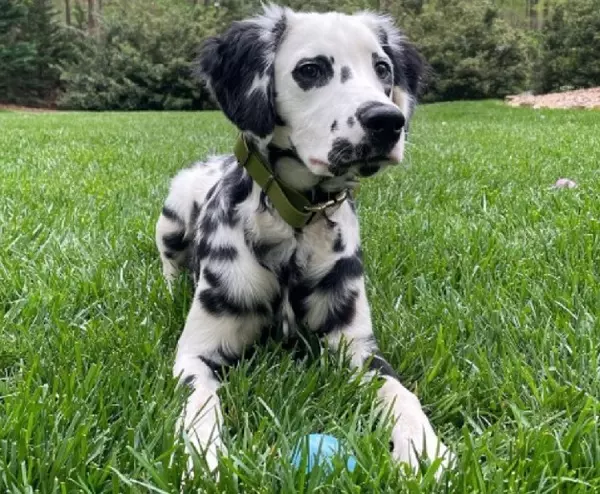
Long Haired Dalmatian Dog Breed. Are Long Coated Dalmatian Purebred or Mix?
This dog is not a purebred dog. The American Kennel Club, which is the main organization that recognizes and registers purebred dogs in the United States, does not recognize the long haired Dalmatian. Therefore, it is not considered a purebred dog by most people.
So, what is a long coat Dalmatian? It is a mix between a Dalmatian and some other breed of dog. The exact mix can vary, but it is usually between a Dalmatian and a Poodle, Bichon Frise, or Affenpinscher.
Dalmatian Dog Breed History. Have Long-Haired Dalmatians Always Existed?
This dog was first bred in the 1970s. A breeder in England wanted to create a Dalmatian with a softer, more gentle personality. To do this, she mixed the Dalmatian with the Affenpinscher. The result was a dog that was less active and more affectionate than the typical Dalmatian.
Over the years, this dog has become increasingly popular. Some people prefer them because they shed less than the short-haired variety. Others simply think they are more beautiful. Whatever the reason, there is no denying that the long haired Dalmatian is a unique and lovely dog.
Long Haired Dalmatian Genetics: How Did a Dalmatian Get a Long Coat?
It’s a question that many people ask when they see a Dalmatian with a long coat – how did this happen? After all, the vast majority of Dalmatians have short hair. So where did the long haired gene come from, and how did it end up in Dalmatians?
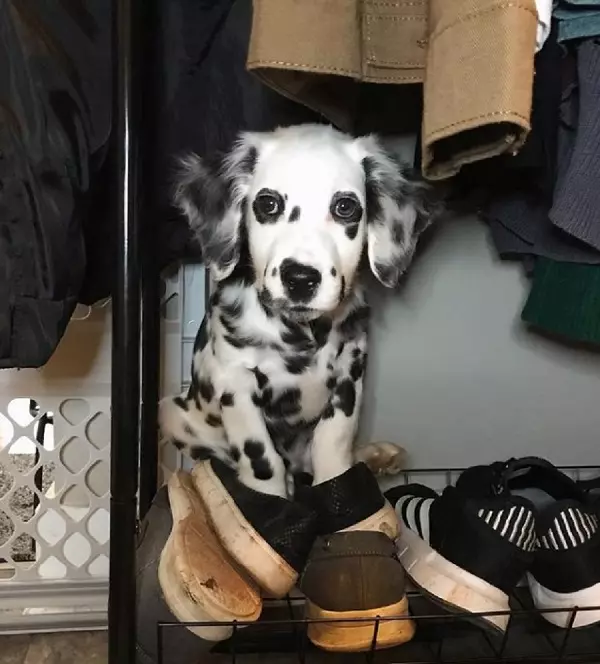
The answer lies in the genetics of Dalmatians. The long coat or “LC” gene is a recessive one, which implies that both parents must have two copies of the gene in order to give birth to a long-haired Dalmatian puppy. Interestingly, long-hair Dalmatian puppies have been showing up in litters for at least 15 years – meaning that the gene has been around for a while, even though it’s not particularly common.
So how did this happen? It’s likely that the long-coat gene was originally introduced to the Dalmatian breed through outcrossing (breeding with another non-related breed). This was a fairly common practice in the early days of Dalmatian breeding, when the gene pool was still relatively small. Over time, the gene was passed down through Dalmatian generations until it eventually became fairly widespread – though still not as common as the short-coat gene.
Physical Appearance of Long-Haired Dalmatian
Long-haired Dalmatians are alert and intelligent dogs that make great family pets. They are easily recognizable by their unique spotted coat, which can come in a variety of colors.
Face
The Long-Haired Dalmatian has a defined and strong muzzle, with the top part being level and parallel to the top of the skull. The breed’s long hair typically covers the entire muzzle, giving them a unique look.
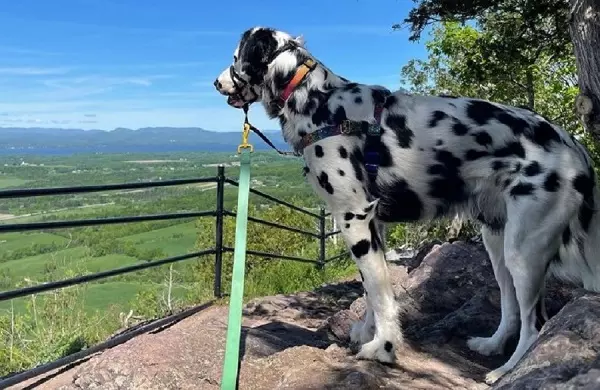
Eye Color
Long-haired Dalmatians typically have dark to blue eyes, although some may have other eye shades.
Body
The Long-Haired Dalmatian is a medium sized breed of dog that typically weighs between 45 and 70 pounds. They are well proportioned and have a strong, athletic build.
The long-haired Dalmatian is a beautiful dog breed that is known for its distinctive gait. These dogs have long, lean legs and a graceful body, which makes them ideal poster dogs for the fire department.
When it comes to their appearance, long-haired Dalmatians are truly unique dogs. They boast a beautiful, long coat of fur that is both eye-catching and luxurious. However, don’t let their glamorous exterior fool you – these dogs are just as versatile and hardworking as their short-haired counterparts.
How Long Is the Coat on a Long-Haired Dalmatian?
The coat on a long-haired Dalmatian is not as long as you might think. While they do have longer hair than their short-haired cousins, it is not a thick, fluffy coat that covers their entire body.
Instead, the long hair is mostly concentrated on their ears, tail, and legs. So if you are looking for a dog with a thick coat that will keep you warm in the winter, a long-haired Dalmatian is not the right breed for you.
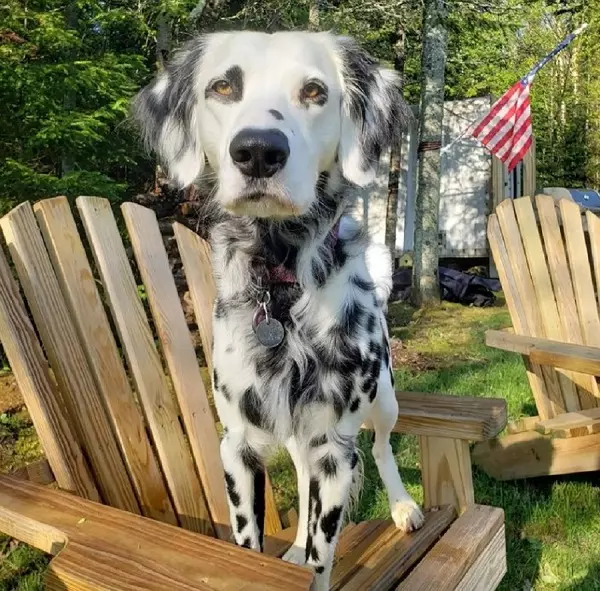
While the exact length of the coat can vary from dog to dog, it is typically around 2-4 inches long. This is much shorter than other long-haired breeds such as shih tzus or cocker spaniels. The coat is also not as dense, so it does not provide as much insulation.
What Colors Do Long-Coat Dalmatians Come In?
The majority of Dalmatian puppies are born with pure white skin. There will be no obvious markings until at least ten days after birth, if not longer, when the spots start to develop and become visible.
Long-coat Dalmatians typically come in one of three colors: black, blue, or liver. Black is the most common color, followed by blue, with liver being the least common. All three colors are equally beautiful and there is no real preference among Dalmatian enthusiasts.
How Much Does a Long-Haired Dalmatian Weigh?
The average weight for a long-haired Dalmatian is 45 to 70 pounds. However, If your dog is heavier than the average weight, it’s probable that he or she is overeating. If this is the case, you should adjust their diet, training, and exercise routines somewhat more cautiously.
How Tall Can a Long-Haired Dalmatian Get?
A long-haired Dalmatian can grow to be anywhere from 21 to 23 inches tall. This is slightly taller than the average for the breed, which is between 19 and 22 inches tall. Males are typically on the taller end of the spectrum, while females tend to be on the shorter end.
How Long Do Long-Haired Dalmatians Live?
According to most sources, long-haired Dalmatians have an average lifespan of 10 to 13 years. However, as with all dog breeds, their life span is highly dependent on several factors such as family history, diet, and exercise.
While the average lifespan of a Dalmatian is around 11 years, some have been known to live much longer. A dog named Scootie made headlines when he lived to the ripe old age of 20. While long-haired Dalmatians are not as common as their short-haired counterparts, they typically enjoy the same lifespan.
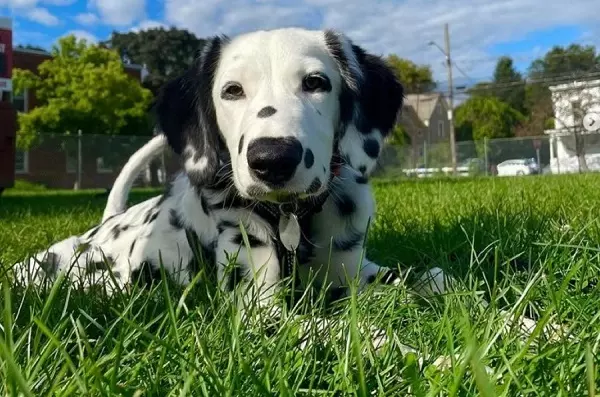
Long Coat Dalmatian Temperament: Do They Make a Good Family Pet?
Like standard Dalmatians, long coat Dalmatians are friendly, outgoing, and energetic. They love to play and have a strong prey drive. They are also very intelligent and easily trained. The biggest difference between the two types of Dalmatians is their coat.
Long coat Dalmatians are the perfect family dog. They are filled with energy and love going on adventures, making them the ideal companion for an active family. They are also loyal and protective of their families, which makes them great guardians.
Lc dalmatians are a beautiful, unique breed of dog. Though their coat may require more care than some other breeds, they are loyal, loving companions that will enjoy spending time with you, whether it’s going for a walk or snuggling on the couch.
Are Long Haired Dalmatians Aggressive?
Dalmatians are less aggressive naturally compared to more energetic breeds which can be a great option for families who are looking for a larger dog breed that is also a good family dog. With that being said, it is important to understand that Dalmatians are considered medium to large-sized breeds which means they will naturally be more powerful compared to a small dog breed.
This means training and getting them used to children, other dogs, and other factors are incredibly important.
Do They Make Good Family Dogs?
Dalmatians are great family dogs because they are loving, friendly, and protective animals. They make excellent watchdogs and will guard your home against intruders. Dalmatians are also very loyal to their families and will always be there for you when you need them.
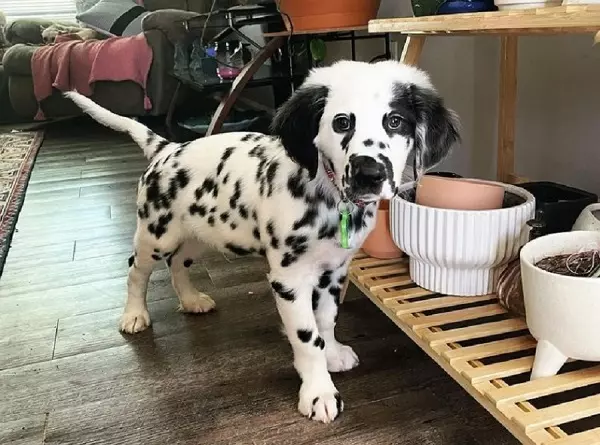
If you are looking for a family dog that will love you unconditionally and always be there for you, then a Dalmatian is the perfect dog for you. Dalmatians are known for their loyalty and affection, which makes them great family dogs. They have a lot of energy and need plenty of exercise, but they are also good at relaxing and cuddling.
They are intelligent and trainable, although they can be stubborn at times.
Are Long-Haired Dalmatians Good With Kids?
Many people think that because Dalmatians are bred as hunting and working dogs, they might not be good with children. But the truth is, Dalmatians are actually great with kids! They are gentle and loving by nature, and they have the perfect amount of energy to keep up with kids’ games.
So if you’re looking for a family-friendly breed, a long-haired Dalmatian might be the perfect fit for you.
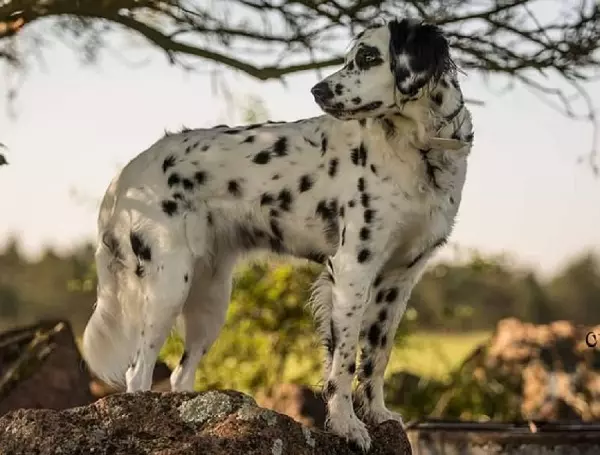
Are Long-Haired Dalmatians Hypoallergenic?
No, long-haired Dalmatians are not hypoallergenic. They may have less shedding than their short-haired counterparts, but they still produce dander and allergens that can trigger reactions in people with pet allergies.
While long-haired Dalmatians are not technically hypoallergenic, they may be a better option for those with pet allergies. This is because the proteins that trigger allergies are found in the dog’s saliva and dander, not the hair itself. Long-haired Dalmatians have less saliva and dander, which means there is less of the allergens that can cause a reaction.
While they may not be as famously hypoallergenic as the Poodle, long-haired Dalmatians can still make great pets for those with allergies. They produce less dander than their short-haired cousins, and their coat is less likely to shed. However, because they have a longer coat, it is important to brush them regularly to prevent matting and tangles.
If you love dogs but are allergic to them, you might be wondering if there are any hypoallergenic breeds that you can consider. Dalmatians are certainly one of the most iconic dog breeds out there, and their long hair might make them seem like they would be less likely to cause an allergic reaction.
If you are considering a long-haired Dalmatian, be sure to meet the dog first to see if you have a reaction.
Health Issues of Long Haired Dalmatian
Hyperuricemia
Hyperuricemia is a hereditary defect in the metabolic system of dogs. It can affect any breed of dog, although it is more prevalent in Dalmatians, Bulldogs, and Black Russian Terriers.
Symptoms of hyperuricemia include:
-Excessive urination
-Increased thirst
-Weight
In this condition, there is excessive excretion of uric acid in the urine that leads to the development of kidney and bladder stones.
Dalmatian Deafness
Dalmatians with long hair are particularly prone to deafness. This is because the hair can block the ear canal, making it difficult for sound to reach the inner ear. This can lead to a condition called conductive hearing loss, which cannot be treated or cured.
There are several possible explanations for the high prevalence of deafness among Dalmatians. One theory is that it is due to the Dalmatian’s unique coat type. Long-haired Dalmatians have significantly more hair in their ears than short-haired Dalmatians, which could impede sound waves and lead to hearing loss.
Epilepsy
Epilepsy is a neurological disorder that is seen in dogs of all breeds, but is most commonly found in Dalmatians. The cause of epilepsy is unknown, but it is thought to be due to a combination of environmental and genetic factors. Dogs with epilepsy may have seizures that can be mild or severe.
Seizures can occur suddenly and without warning, or they may be triggered by certain activities such as excitement or stress. Epilepsy is a lifelong condition that cannot be cured, but it can be managed with medication and lifestyle changes. If you think your dog may be having a seizure, please contact your veterinarian immediately.
Hip Dysplasia
Hip dysplasia is a painful condition caused by a poorly-formed hip joint. It is a common problem in many breeds, especially larger dogs. Long-haired Dalmatians are no exception. This condition can cause your dog a great deal of pain and suffering.
It is a condition where the hip joint becomes inflamed, leading to arthritis. A veterinarian may prescribe surgery, which involves replacing the entire joint with a steel and plastic one that functions correctly and comfortably.
Potential Obesity
Dalmatians are a very active breed of dog, which can make them hungrier than your average dog. This, combined with their love of food, can lead to obesity. Dalmatians need plenty of exercises to stay healthy and fit. If they don’t get enough exercise, they are at risk for weight gain.
Feeding your Dalmatian the right food is important to avoid obesity. Avoid giving them table scraps or too many treats. Stick to a healthy, balanced diet for your Dalmatian. If you think your Dalmatian is obese, take them to the vet for a check-up. They can help you create a weight loss plan for your dog.
Tips For Grooming Your Long Haired Dalmatian
Grooming
If you have a dalmatian dog, it’s important to be diligent about grooming. The breed is prone to shedding, so regular brushing is a must.
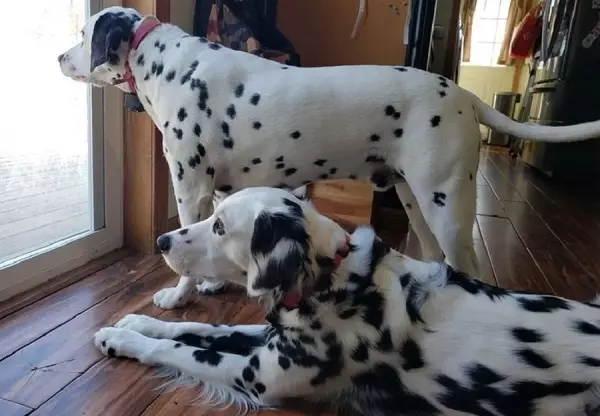
Bathing
You should also trim your dog’s nails regularly and bathe them as needed.
Shedding
Daily brushing is key to keeping your dalmatian dog’s coat healthy and free of tangles. Use a wide-toothed comb or brush to avoid damaging their fur.Give them regular baths using a mild dog shampoo. This will help keep their coat clean and prevent matting.
Nutrition: How Much to Feed a Long-Haired Dalmatian?
The amount of food that a long coat dalmatian needs depends on several factors, including his age, size, health conditions, and physical activity level. Puppies and young dogs need more calories than adults, since they are growing and developing. Large dogs also require more calories than small dogs.
Dalmatians are known for their high activity levels, and as a result, they may need more food than other breeds. If you have a long-haired Dalmatian, you’ll need to be especially mindful of his food intake. On average, long-haired Dalmatians require 1.5 to 2 cups of food per day. If your dog is particularly active, you may need to increase his food intake accordingly.
When it comes to feeding your long-haired Dalmatian, quality is just as important as quantity. Be sure to choose a high-quality dog food that is tailored to the needs of active dogs. Because they are susceptible to hyperuricosuria, they should not be fed a high-protein diet. Furthermore, they must have access to water on a regular basis.
Make Sure Your Dalmatian Gets A Lot of Exercises
Dalmatians are high-energy dogs that need a lot of exercise. If you don’t give your Dalmatian enough exercise, they may start acting out and misbehaving. That’s why it’s important to set a routine where your Dalmatian gets daily playtime as well as a daily walk. It is important to get them used to this early on so they can stay healthy and happy as they grow older.
Long Haired Dalmatian Training
One of the most important things you can do when training a dog is to give them plenty of exercise.
Here are some helpful hints for training your Long-haired Dalmatian puppy:
Get Your Puppy Used To Children
Some dogs will never get to know children as a puppy or in their formative months, and then become nervous around youngsters or animals. If you have your heart set on a long coat dalmatian, then you must be extra diligent in their training and socialization around children.
Early Socializing
Early Socializing is key for any dog breed, but especially important for lc dalmatians. Without early socialization, they may become aggressive towards other people.
Daily Exercise
Daily Exercise is very important for dalmatian dogs. They require at least 20 minutes in the morning and evening, with an additional 1 hour during the day. If you do not have time for a full hour, two 30 minute sessions will suffice.
Obedience Tricks
During training, Dalmatians are intelligent and mischievous, therefore obedience methods and sayings must be utilized to deter them.
Before You Buy a Long-Haired Dalmatian Puppy
Before you acquire a fluffy Dalmatian puppy, it’s vital that you obtain the following tests from the breeders:
The BVA/KC/ISDS Eye Scheme is a voluntary initiative set up to screen dogs for eye defects. The examination is carried out by a veterinary ophthalmologist and all results are recorded.
The BVA/KC/ISDS Hip Scheme is a voluntary initiative set up to screen dogs for hip dysplasia. The examination is carried out by a veterinary surgeon and all results are recorded.
The BVA/KC Elbow Scheme is a voluntary initiative set up to screen dogs for elbow dysplasia. The examination is carried out by a veterinary surgeon and all results are recorded.
Dalmatians can be susceptible to deafness, so it’s important that the parents of your puppy have had their hearing tested by a BAER (Brainstem Auditory Evoked Response) machine. This test is non-invasive and simply involves placing sensors on the head in order to measure the brain’s response to sound.
Finally, it’s also important to choose a breeder who is experienced in dealing with Dalmatians, as they can be a high-maintenance breed. Be sure to ask lots of questions and visit the premises before making your decision.
Are Long-Haired Dalmatians Recognized by the AKC?
No, the AKC has not recognized long-haired Dalmatians as a distinct breed or variant of the standard Dalmatian.
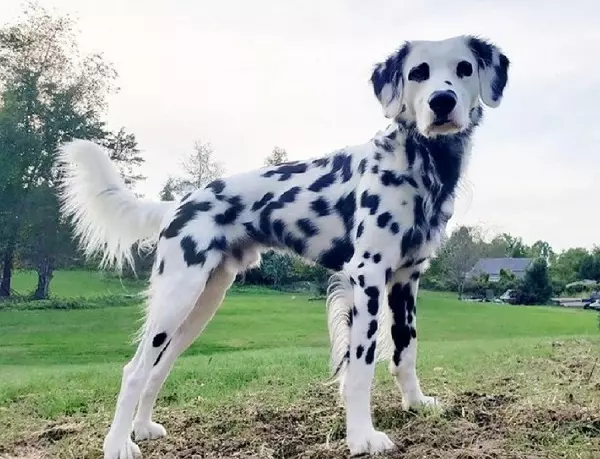
Despite the fact that long-haired Dalmatians are considered purebred, their lengthy coat is regarded as the result of a faulty gene.
Long Haired Dalmatian Breeder and Rescue
How Much Does a Long Haired Dalmatian Cost? Puppy Price and Expenses
A long coat Dalmatian puppy will have a starting price between $600 to $1,200. The price will depend on the breeder, and the coat type can also affect the price. Some breeders will charge more for a long coat Dalmatian puppy because they are considered to be more rare.
There are also other expenses that come with owning a new puppy. These include things like food, toys, vaccinations, and microchipping.
It would include the following:
- Spaying/neutering; Routine vaccinations; Deworming; Heartworm prevention – estimated at $200-$500
- Crate; Dog bed; Leash and collar; Bowls -$300-$600
- Toys; treats and food -$300-$500
- Training class; grooming -$500-$900
Grand total in the first year – $2,000 to $3,500.
After the first year, you can expect to spend about $700 to $900 per year on things like food, vaccinations, and routine vet check-ups. You may also have additional costs for things like obedience training, grooming, and dental care.
Where to Buy or Adopt a Long Coat Dalmatian?
If you’re interested in adding a lc dalmatian puppy to your family, you have a few options. You can buy your puppy from a reputable breeder, or adopt an adult dog from a rescue organization.
When buying from a breeder, it’s important to do your research to make sure you’re getting a healthy, well-bred puppy.
A good breeder will be able to provide you with a pedigree and answer any questions you have about the breed.
Long-haired Dalmatian puppy breeders may be found below:
- LC Dals
- Country Nightz Ranch
- Dalmatian Club of America – Breeder Referral List
- Paradise Spots Dalmatians LLC
- American Kennel Club (AKC) Marketplace –Dalmatian Puppies for Sale
If you’re interested in adoption, there are several Dalmatian rescue organizations that place unwanted or displaced dogs in loving homes. Adopting an adult dog can have many benefits, including a lower cost and a calmer, more even-tempered dog.
Here are some links to get you started:
- Dalmatian Rescue of South Florida
- Dalmatian Rescue of Southern California
- Adopt-a-Spot Dal Rescue
- Dalmatian Club of America – Rescue
- Dalmatian Rescue of North Texas
- Dal Rescue (Canada)
- Willing Hearts Dalmatian Rescue Inc.
No matter where you get your long hair dalmatian dog, be sure to have them BAER tested to ensure they can hear properly.
Frequently Asked Questions About Long Haired Dalmatians
Are Long Coat Dalmatians Rare?
Long coat Dalmatians are not as common as their short-coated cousins, but they are certainly not rare. In fact, long-coated Dalmatians make up about 20% of all Dalmatians registered with the American Kennel Club.
Do Long Haired Dalmatians Shed?
The long coat dalmatian is a moderate shedder, no matter what type of coat it has. Long-coated Dalmatians don’t have a particular season for shedding. Long-coat Dalmatians will shed all year long.
Shed hair is difficult to remove from a house, especially with their lengthy coats that make the locks more noticeable. Regular vacuuming, at least twice a week, might assist reduce shedding.
Do Long-Haired Dalmatians Bark a Lot?
Yes, long-haired Dalmatians can have a loud bark. This is often an indication of aggressive behavior as a result of insufficient training or boredom when their activity requirements are not met. If you have a long-haired Dalmatian, it’s important to make sure they get enough exercise and are properly trained to avoid excessive barking.
Are Long-Haired Dalmatians Easy to Train?
Just like any other dog breed, long coat dalmatian can be a little bit tricky to train. They’re mischievous and clever, making them difficult to train. However, with patience and consistency, you will be able to train your Long-Haired Dalmatian in no time.
Conclusion
Long-haired Dalmatians are a beautiful, unique breed of dog that can make a great addition to your family. They are intelligent and spunky, but with proper training and exercise, they can be well-behaved dogs. They do require some extra grooming due to their long coats, but many people find this to be a small price to pay for the companionship of these amazing animals.

